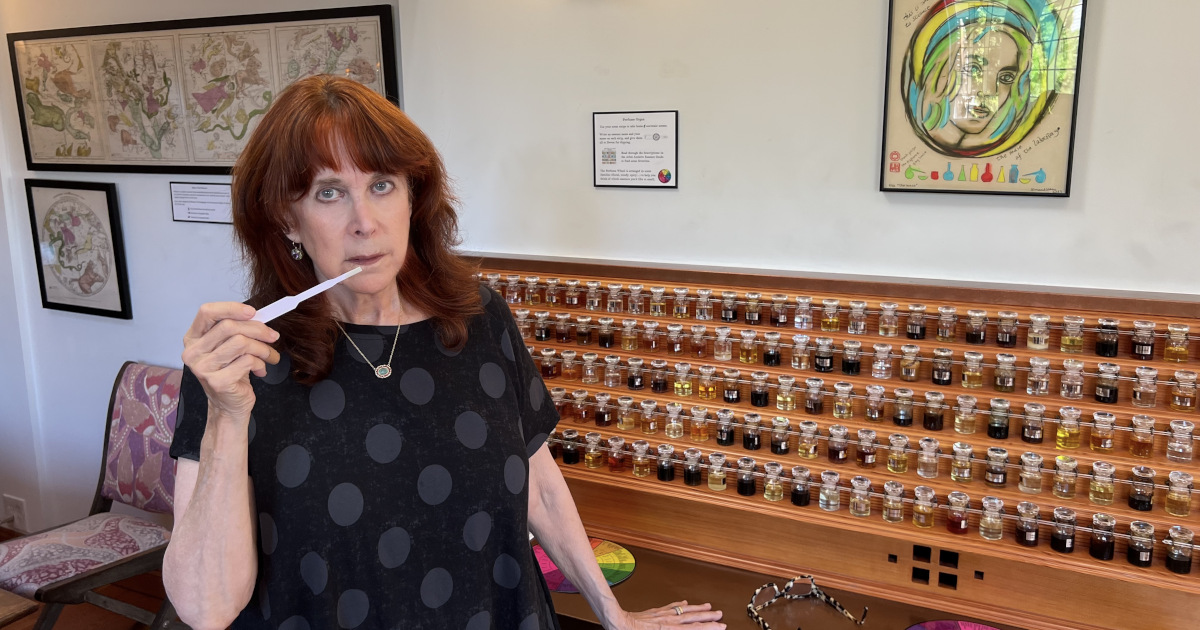Cette publication est également disponible en :
Français
Some perfumes disappear as quickly as they appeared. And yet there are the perfumes that count, the ones that forever mark the life and career of a perfumer. Week after week, a number of them have told us about their relationship with a creation, and its sometimes unconscious influence on their composing style.
Today, Mandy Aftel talks about Joy by Jean Patou, the scent her mother used to wear. An olfactory shock that inspired her vocation.
As with most people – whether consciously or not – my earliest memories and deepest emotions are saturated and inextricably bound up with scent. The aroma of Joy perfume, for example, evokes my mother kissing me goodnight as a child before she went out with my father on Saturday nights. A cloud of her signature perfume enveloped me, along with the animal undertones and infinite softness of her mink. I was entranced by the gold glinting from her dresser, with its phalanx of mysterious perfume bottles carefully arrayed on their mirrored tray, metallic charms with stylized writing hanging from their gilt-threaded necks.
Her perfume – sophisticated, glamorous, made for the night – was like a siren’s song. Joy, created by Henri Alméras in 1929, is a concoction of intoxicating petals (jasmine, rose, ylang ylang, tuberose) in a warm, animalic base. The heady, narcotic aroma of those flowers took me to exotic places in my imagination. The profound resonance of that sense memory, and my awareness of the mysterious, primordial power scent holds over us all, laid the seeds for my creative path. And it is in this regard that scents – not just one scent – changed my life. The layering of essences – particularly those of flowers, and especially jasmine, with its complex “yin and yang” reconciliation of fecal and floral notes – spoke to my soul.
For my own perfumes, the quality of the natural essences and their intrinsic aromatic facets is essential. Because of that, I take great delight in sourcing my raw materials from small growers worldwide and comparing them, looking for the absolute best version of, say, rose or jasmine. When you create a floral perfume with an exclusively natural palette, each essence is so complex, and that complexity is magnified when you put several heady florals together. It is like trying to get a team of temperamental thoroughbreds to pull in harness together. But adding an animalic – say, a fine ambergris – tames the group, gets the florals to speak to one another with an otherworldly grace.Joy, which perfectly embodies this majestic balance, has influenced two creations in my line. Parfum Privé depends on the symphony of four foundational notes: suave orange flower absolute and fruity osmanthus wrapped around musky ambrette and shimmering ambergris, with none taking a back seat to any other. I can also mention Lumiere, with a sheer and luminous texture, using only natural essences and isolates. It’s my vision of a gorgeous floral bouquet of honeysuckle, boronia, magnolia and linden blossom in a base of green tea spiked with ambergris.
Mandy Aftel, 15th of July 2023.
- Nez recently published a French version of Essence & Alchemy translated by Sarah Bouasse.
Main visual: © Foster Curry








Comments